
Outcast: Second Contact Review
Outcast is an outstanding experience, supported by unparalleled quality in every single creative facet of its design. The plot, the lore, the universe, the tech, the characters, the music, even the AI -- the game is one of the most remarkable pieces of entertainment I ever had the chance to experience.
After a failed experiment in a parallel universe threatens to consume Earth, former Navy SEAL Cutter Slade is sent into an interdimensional black hole with a team of scientists to close the rift slowly ripping both worlds apart. Arriving in the planet of Adelpha, Slade is cut off from the team and heralded by the pacific Talan population as the Ulukai, a messiah of the gods meant to put an end to the tyrannical oppression of the evil Fae Rhan. After a short tutorial in the frozen region of Raanzar, the game opens up dramatically and you’re set free to make your own way.
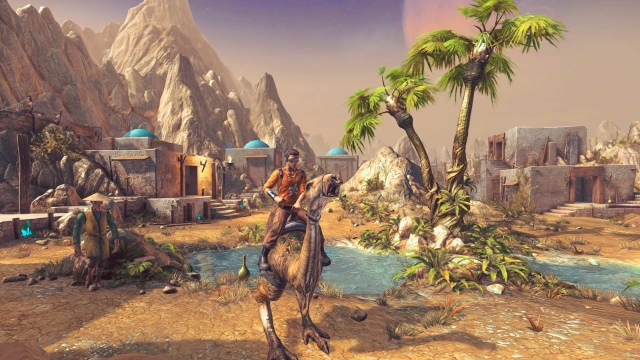
Adelpha is a big place: each region has a different climate, ranging from the fertile lands of Shamazar to the ocean archipelago of Okasankaar, and travel between them is done via daokas: Stargate-like portals that instantly connect the various continents. Each region has a few daokas scattered about, and most are accessible from the start -- some are guarded by enemies, others are hidden, and others still need the help of a shaman in order to be activated. If you are up to the challenge, there are few places Outcast: Second Contact forbids you to go.
What’s most striking about the title is how wonderfully deep and unique its world is. The Talan are a singular alien race, complete with their own language and culture, possessing a soul and heart only dreamt of by most big budget TV or movie races. Each named character is a uniquely endearing individual, dispensing information about the game in a manner so natural and fluid that you often forget you are playing a game. There is no useless exposition in Outcast -- every piece of dialogue is better than three-quarters of Netflix programming.

That heart and soul oozes out of every pore of the game: Talan speak in awe when meeting you, humbled by being in the presence of the messiah who will save them from a dictator; Twon-ha mounts happily saunt around grassy fields, exploring the world with a nigh ostrich-like curiosity; and enemies scream at you incredulously, torn between their belief on what Fae Rhan told them and the presence of an outsider among their midst, clearly (hopefully) kicking their asses. The world of Outcast feels alive in a way very few games manage to achieve, and immerses you in its universe in a way seldom seen elsewhere.
However, all that creative brilliance is let down by the technical execution. Animations are extremely bad, including a mismatched lipsync that would seem comical if it wasn’t tragic. I have not seen this level of bad synchronization since the early naughts, and it frequently jerked me right out of the lovely world I was immersed in. Tangentially, controls are not exactly bad, but they lack the kind of responsive and swift movement we are used to nowadays in most adventure titles.
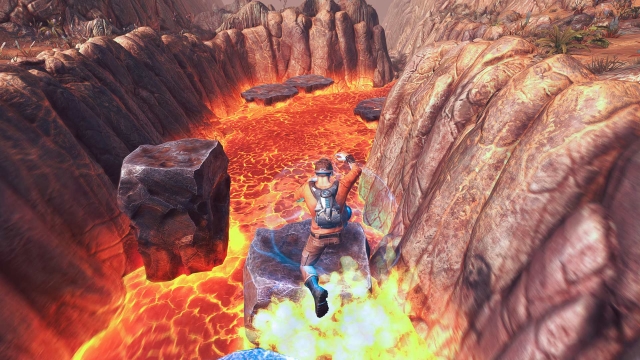
Graphics and audioscape are not dragged down by the shoddy technical aspects, delivering a breathtaking level of quality. The world is vibrant and full of colours, frequently bequitting expansive vistas worthy of the most beautiful concept art. The scenario is brought to life by a fantastic audio design, where each item, creature, and object has its own unique signature, and it is all underscored by a magnificent soundtrack capable of evoking the most distinct range of emotions. Like every really good title, Outcast: Second Contact’s soundscape is a work of art, from the primitive thrill of battle to the calming lull of exploration, all the way through to the enlightened heights of philosophy.
The gameplay itself is a blast, intertwining exploration with dialogue and action setpieces. Each region is currently overrun by the warrior caste, deeply disrupting the balance of a world that, until recently, was in harmony. In order to find your team, you garner the Talans favour by proving to them you are indeed the Ulukai -- even if Cutter’s sarcastic tone clearly barely humours the notion. As you gather the support of the people and their shaman, the aliens start to fight back against their oppressors in their own pacifist way, stopping important supplies that keep Fae Rhan’s army nourished. As each region rebels, the soldiers start to see themselves with less food, medicine, weapons, and more, and gradually weakening. By the time you reach the end, the differing intensity of the opposition you face is mindblowing.
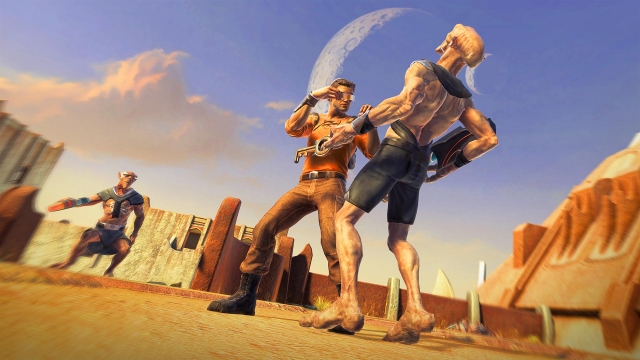
The most unbelievable thing, however, is that Outcast is not a new game -- it is actually 18 years old by now. It was absolutely groundbreaking at the time, but even after nearly two decades, it still remains one of the most creative and satisfying titles to ever hit the market.
Unfortunately, the remastered version fails to improve on any aspects of the original that could be updated, and actually butchers some of what it actually did right.
Aside from utterly destroying the full CGI intro and replacing it with an atrocious low quality 2D freeze frame sequence, Outcast: Second Contact does away with one of the most novel ideas of the original: the save system. Instead of checkpoints or Function buttons, the save system is diegetic -- through an essence-imprinting crystal cheesily called gaamsav, the player is able to save anywhere at anytime by holding it firmly in their hands. Activating the gaamsav generates light and noise for a few seconds, which alerts anyone around you -- it serves the dual purpose of increasing immersion and stopping the player from mindless quick saving in dangerous situations. The remaster does away with all that, instead turning the gaamsav into an ordinary one press save system like every other title ever.
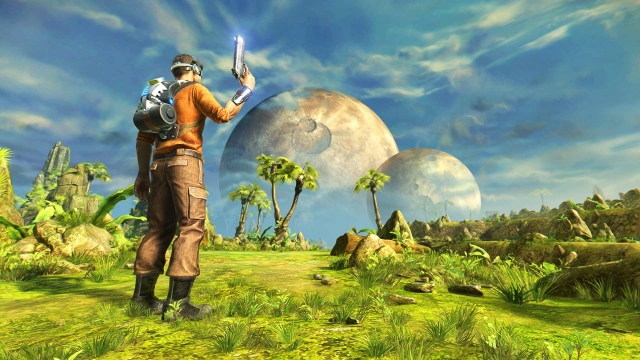
What’s most damning is that such a change was completely uncalled for, yet real improvements that would be welcome like an update to the shooting and movement system are utterly absent from the title. Shooting and moving is not bad by any means, just dated -- it feels quite satisfying to engage in firefights, but gunplay in the industry has come leaps and bounds since then.
However, the remaster is not bereft of improvements -- weapons fire faster, a not-exactly-needed roll mechanic was added into the game, and the already brilliant AI works more aggressively to track you down. In the original, enemies would display an amazing level of intelligence and coordination when you engaged them in battle, and the remaster keeps that experience alive. To be fair, the most amazing thing about the remaster is that upon starting, it looks and sounds exactly like you remember. It is an exercise in nostalgia.
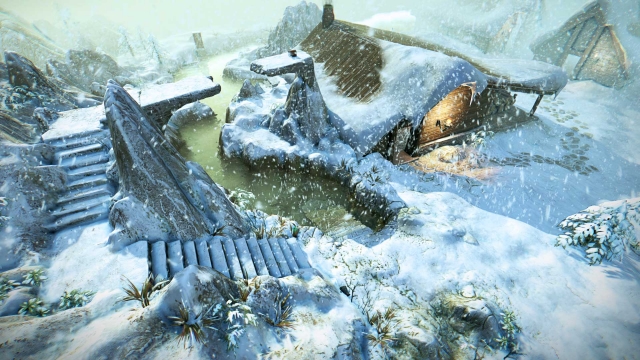
In the end, Outcast: Second Contact is a fantastic game severely let down by its remaster’s terrible execution. Instead of properly updating the game or just straight up remastering it like Outcast 1.1 did, Second Contact picks and chooses what to change and ends up delivering a worse experience than the original classic. Besides unfavourably altering some previously satisfactory gameplay aspects, its new character designs are completely dissonant from the original voices, it completely butchers animations and conversations, and manages to murder the introduction with a horrible 10-minute long storyboard sequence.
There are very few games that truly push what the genre is capable of. Most games are average, and even the ones that rise above the rest usually only possess a single interesting take or mechanic that makes them stand out -- very few titles are simply good, from their core to their extremities, and Outcast was one of those titles. While Outcast: Second Contact is not bad and does convery much of the magic of the original, it is hard to recommend -- on one hand, it is one of the best and most accomplished games I've ever played; on the other, the shoddy technical execution of the remaster is leagues below what the original accomplished. If you want to experience Outcast, I wholeheartedly recommend you go with the original 1.1 version.
Outcast - Second Contact (Reviewed on Windows)
This game is great, with minimal or no negatives.
One of the most creative and well executed titles ever released, dragged down by a disappointing remaster.








COMMENTS